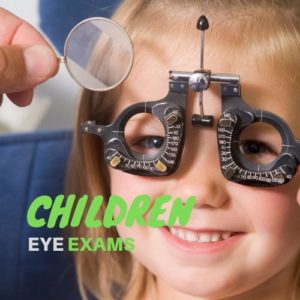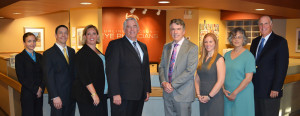Eye Exams for Children


Your child should have a comprehensive eye exam at 6 months of age and if there are no problems another exam should be performed before your child begins kindergarten.
The exam at age 6 months will include a case history and the doctor will ask your child’s birth weight and whether your child was full-term, if there were pregnancy or delivery complications, and take a medical history including current medications and past or present allergies. You are asked these questions because birth weight, pregnancy and/or delivery complications, medications, and allergies can affect your child’s vision.
Also, be sure to tell the eye doctor if you have noticed any of the following in your child:
- Delayed motor development
- Frequent eye rubbing
- Excessive blinking
- Failure to maintain eye contact
- Poor eye tracking skills
Tests to assess an infant’s eyesight
All these tests are designed to evaluate vision when a child is too young to respond verbally.
- Pupil Responses This test evaluates whether your child’s pupils open when exposed to light and if the pupils close properly when the light is absent.
- Fixate and Follow This test determines if your baby’s eyes are properly tracking objects. Infants should be able to focus on objects soon after birth and to follow those objects with their eyes by about 3 months of age.
- Preferential Looking For this test, the eye doctor will show your baby cards that are blank on one side and have stripes on the other side. During this test, the eye doctor is looking to see if your baby is attracted to and holds a gaze on the cards with stripes.
The doctor will also examine the cornea and iris of each of your child’s eyes and will examine your child’s eyelids to look for abnormal or infected eyelash follicles, bumps, eye discharge, and swelling.
Tests to assess your preschool child’s eyesight
These tests do not require your child to be able to read letters or to verbalize if they are too shy or young to do so.
- LEA Symbols This test is similar to the eye chart with letters, but it uses the following symbols instead—house, apple, square, and circle. This test can detect issues with visual acuity, contrast sensitivity, color vision, and motion perception.
- Retinoscopy For this test a light is shined into your child’s eye to observe the reflection from the retina. This test is used to see if there is any clouding of the lens of the eye (congenital cataract) or any significant refractive errors such as nearsightedness or farsightedness.
- Random Dot Stereopsis This test uses patterns of dots and 3D glasses to measure how well your child’s eyes work as a team.


